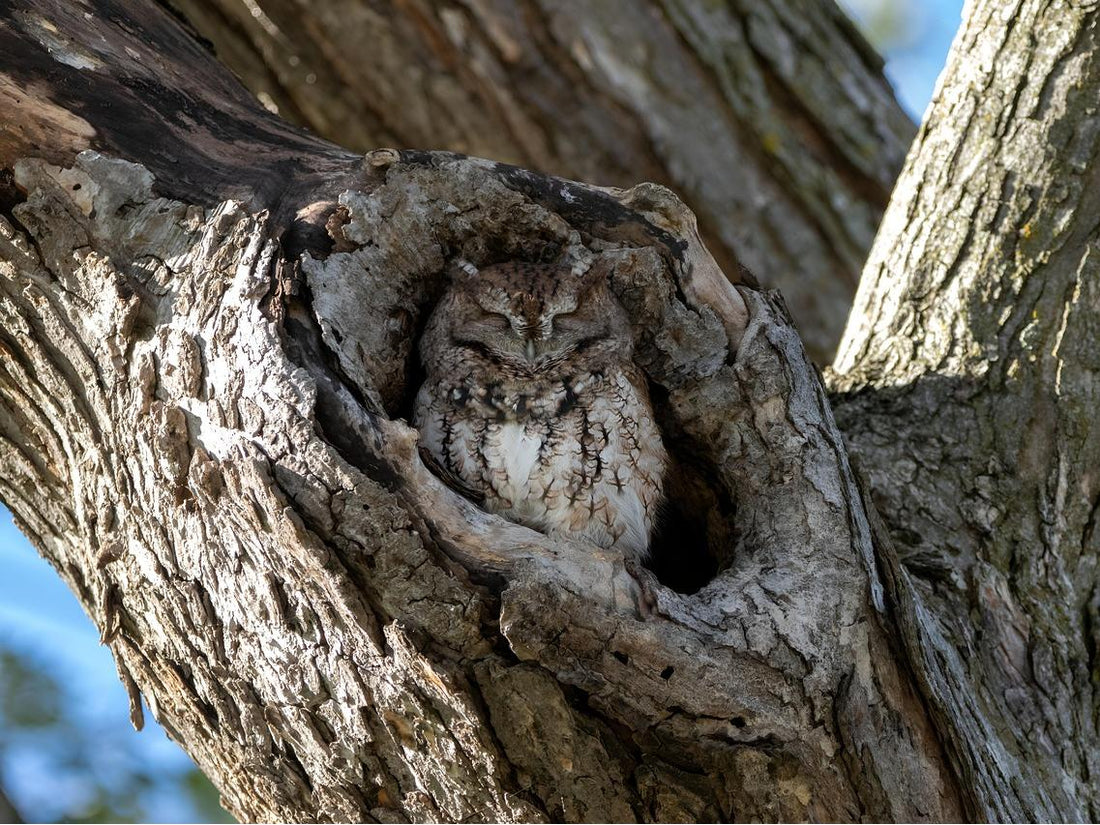Do Birds Sleep? How, Where, and the Fascinating Ways They Rest Safely
TTNatureTeam
Yes, birds do sleep, though their sleep patterns differ significantly from humans. Most diurnal birds rest from dusk till dawn, while nocturnal birds are active during dusk and rest at dawn.
Birds generally sleep around 10 to 12 hours, though sleep duration varies based on their environment and activity level. For instance, a mother bird caring for her young may sleep less to tend to her offspring.
Common Sleeping Positions of Birds
Birds have evolved various sleeping positions that help them stay safe and comfortable while resting:
● Perching -Most songbirds sleep perched on tree branches, electrical wires, roof eaves, or nesting boxes. Their leg tendons automatically lock, preventing them from falling while they sleep.
● Standing - Larger birds like flamingos sleep on their feet, famously balancing on one leg. This position allows for a quick escape if threatened.
● Floating - Water birds such as ducks sleep in groups on water, which provides protection from land predators while allowing easy access to aquatic food sources.
● Flying - Migratory birds can sleep while flying using Unihemispheric Slow Wave Sleep (USWS), keeping one brain hemisphere awake to monitor for dangers while the other rests.
● Ground roosting - Though primarily ground-dwellers, birds like grouse and wild turkeys often roost in trees for added protection during sleep.

Fun Fact: Blue-crowned hanging parrots from Southeast Asia are the only birds known to sleep upside down naturally, though parakeets and budgies sometimes mimic this behavior playfully.
Types of Bird Sleep
Birds experience different types of sleep depending on their safety and circumstances:
● Bilateral Slow-Wave Sleep (BSWS)
When birds feel completely safe, both brain hemispheres sleep simultaneously, allowing for deep, restorative rest.
● Unihemispheric Slow Wave Sleep (USWS)
One brain hemisphere sleeps while the other stays alert for potential threats. This is essential for sleeping while flying or floating on open water.
● REM Sleep
Birds experience brief REM phases lasting only fractions of a second, during which they may make small involuntary movements.
Where Do Birds Sleep?
Bird sleeping locations are carefully chosen based on safety, protection from predators, and environmental factors that support quality rest:
Trees and Shrubs provide natural camouflage and protection for small songbirds. Dense foliage offers shelter from weather and concealment from predators, creating secure environments for uninterrupted sleep.
Cliffs and Ledges give birds of prey and seabirds elevated vantage points for spotting potential dangers. These high locations provide both safety from ground predators and clear escape routes.
Water Surfaces allow waterfowl to sleep collectively while floating, offering protection from land predators. Group sleeping on water also provides early warning systems when one bird detects threats.
Ground Cover serves ground-nesting birds like meadowlarks and burrowing owls, who choose dense vegetation or fallen logs that provide concealment while remaining close to their natural habitat.
Tree Cavities and Birdhouses offer enclosed, secure sleeping spaces for woodpeckers, bluebirds, chickadees, and wrens. These protected spaces shield birds from weather and predators during vulnerable sleep periods.
Urban Structures provide adaptable roosting sites for city-dwelling birds like pigeons, who utilize building ledges, underpasses, and electrical wires as safe sleeping locations.
Sleep Behaviors Across Bird Species
|
Bird Species |
Sleeping Position |
Sleep Types |
Sleep Adaptations |
|
Penguins |
Standing, lying down, huddled for warmth |
BSWS, brief REM |
Colonial nest sleeping for warmth and protection. Some of the birds take up microsleeping (short, fragmented sleeping) to get rest while guarding nests. |
|
Parrots |
Perching in nests or tree cavities |
BSWS, brief REM |
Flock sleeping with occasional REM vocalizations. |
|
Pigeons |
Building ledges, wires, sheltered ground areas |
USWS, BSWS, brief REM |
Urban adaptability with communal roosting. |
|
Geese |
Standing on one leg, floating on water |
USWS, BSWS, brief REM |
Group sleeping with shared vigilance. |
|
Waterfowl |
Floating on water, standing on land |
USWS, BSWS, brief REM |
One-eye-open sleeping for predator detection. |
|
Puffins |
Cliff Burrows, floating on the sea surface |
BSWS, brief REM |
Seasonal burrow sleeping and open-water rest. |
|
Cardinals |
Perching in dense trees and shrubs |
BSWS, brief REM |
Dense cover selection for weather and predator protection. |
Creating Bird-Friendly Sleep Environments
You can support backyard birds' sleep needs by providing suitable roosting options. Installing birdhouses creates safe sleeping spaces for species like titmice, chickadees, wrens, bluebirds, and screech owls. These structures offer the protection and security birds need for quality rest, contributing to their overall health and survival.
While birds don't sleep exactly like humans, they have developed sophisticated rest patterns that ensure their survival and well-being in diverse environments.
Conclusion
Though bird sleep looks different from ours, it's just as essential for their survival. From sleeping mid-air to tucking into tree cavities, birds have evolved amazing ways to rest safely in all kinds of environments.
Understanding their sleep patterns helps us appreciate just how smart and adaptable they really are. And if you want to help, offering birdhouses or dense shrubs in your yard can make a big difference—especially on cold or windy nights.
